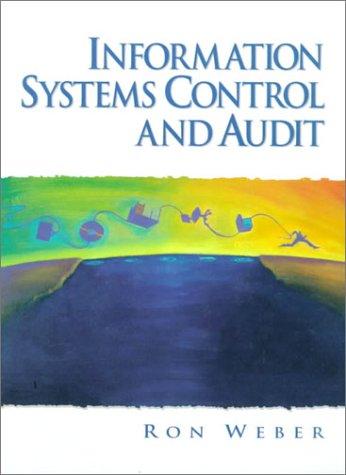You are the senior information systems auditor in a public accounting firm. At the start of this
Question:
You are the senior information systems auditor in a public accounting firm. At the start of this financial year, your firm took over the audit of a major bank that has a full range of wholesale and retail banking services. Your firm was successful in winning the tender for the provision of external audit services.
Interest on corporate loans is a highly material revenue item for the bank. During the conduct of analytical review activities at the start of this financial year, the audit team has noticed some aberrations in the size of corporate loan interest earned. Specifically, when the audit team built a model to predict the amount of interest that should have been earned, the reported amount turned out to be substantially higher than the predicted amount. The team has checked its model carefully, and the members of the team cannot find a reason for the variance.
The partner in charge of the audit subsequently met with the president of the bank to indicate that substantive tests would have to be increased. Additional work would be needed to determine whether the variation between the reported amount of interest and the predicted amount of interest reflected errors or irregularities in the bank's accounts or an error in the analytical model. The partner informed the president that the additional substantive testing might lead to a 5 percent increase in the cost of the audit. The president reacted angrily. She indicated to the partner that your firm would not have won the audit tender if the bank had known that audit fees would be increased in this way. The partner and the president agreed to take a few days to reflect on the situation.
A day after this meeting, the president called the partner to inform him that last year the previous audit firm had undertaken extensive testing of the program that calculates interest revenue on corporate loans. When the audit firm had completed its tests, it had taken a copy of the source code. The president informs your partner that no changes have been made to the program since that time. She asks whether you might not compare the current program against the version obtained by the previous audit firm to confirm that there are no defects in the program's calculation of interest.
Your partner has contacted the previous audit firm. The partner in that firm who was responsible for the bank's audit confirms that the interest program was tested, that his firm was happy with the results, and that they indeed made a copy of the source code. He indicates that he will send a cartridge containing a copy of the source code to your firm.
Upon receipt of the cartridge, the partner in your firm who is in charge of the bank's audit contacts you to request your assistance by your undertaking the code comparison tests. When you use a code-comparison program to compare the source code provided by the previous audit firm against the production source code provided by the bank, you find no discrepancies. Using the bank's compiler, you then compile the source code provided by the previous audit firm. Next you use the code comparison program to compare the object code you generate against the production object code provided to you by the bank. Again, you find no discrepancies.
Required: Write a brief report to the partner in your firm who is in charge of the bank's audit advising him on how you think he should now proceed. If you have any concerns about the reliability of your findings, you should mention these concerns in your report, together with their implications for how the remainder of the audit should be conducted.
Step by Step Answer:






